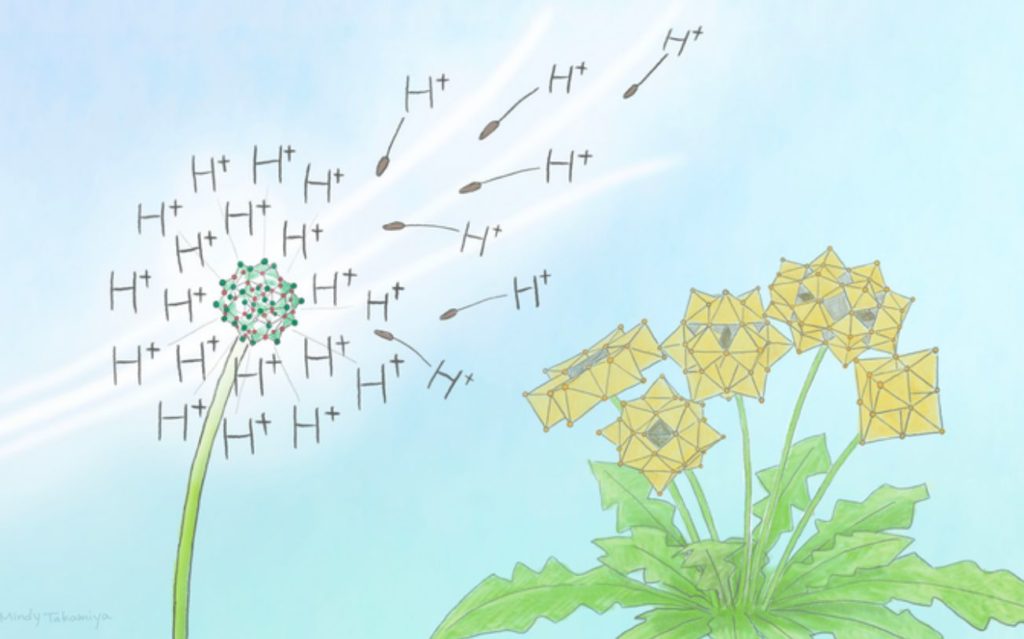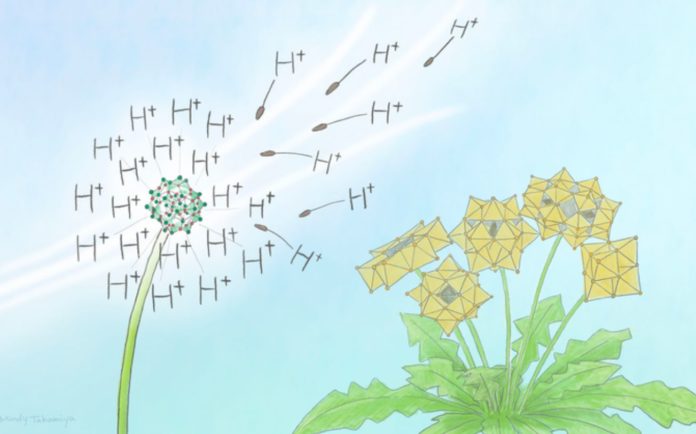A new cluster molecule has been discovered by researchers at Kyoto University’s Institute for Cell-Material Sciences, which could be beneficial as a catalyst. Polyoxometalates are compounds with a big metal-oxide cluster that has a negative charge. Antiviral medications, rechargeable batteries, and flash memory devices all include them.
The newly discovered cluster compound is a hydroxy-iodide (HSbOI), and it possesses huge positively charged clusters, which is rare for a compound of this type. Only a few positively charged cluster compounds have been discovered and researched thus far.
“In science, the discovery of new material or molecule can create a new science,” explains Hiroshi Kageyama, a chemist at Kyoto University. “I believe that these new positively charged clusters have great potential.”

1826 saw the first metal oxide cluster. Hundreds of molecules containing negatively charged clusters have been synthesized since then, with features important in magnetism, catalysis, ionic conduction, biological applications, and quantum information. Their qualities allow them to be used in a variety of sectors, including catalysis, medicine, and chemical synthesis.
In recent times, scientists have concentrated their efforts on synthesizing and studying molecules having positively charged clusters.
By chance, Kageyama and his colleague Ryu Abe discovered their positive cluster. Kageyama, a solid-state chemist, and Abe, a catalytic chemist, have been working together since 2016 to discover novel molecules that can absorb visible light for photocatalysis. They were attempting to substitute the chlorine atom in a chlorine-containing (Sb4O5Cl2) molecule with iodine.
“However, a new material that was completely different from what we expected was obtained accidentally,” adds Kageyama.
Scientists thought they would find a material with 22 atoms in each unit cell. Instead, they obtained a molecule with a unit cell containing 800 atoms.
At first, the scientists couldn’t figure out how the chemical was put together. Powder X-ray diffraction, an old method, didn’t work because the material was too complicated. After a year, Kageyama decided to try three-dimensional electron tomography, a cutting-edge electron microscopy technique that has recently gained popularity as a tool for imaging protein structure. Artem Abakumov and Joke Hadermann of the University of Antwerp, Belgium, were approached by the experts to collaborate on the structure. When the data came back from their partners, the scientists were thrilled to see large clusters.
Further research revealed that the hydroxyiodide molecule contains acidic protons, which is crucial for catalysis.
According to Kageyama, “this finding may open up new possibilities in the design of solid-state catalysts.”
Image Credit: MINDY TAKAMIYA/KYOTO UNIVERSITY ICEMS
You were reading: Scientists Accidentally Obtain An Unusual Cluster Compound: “A New Science”
